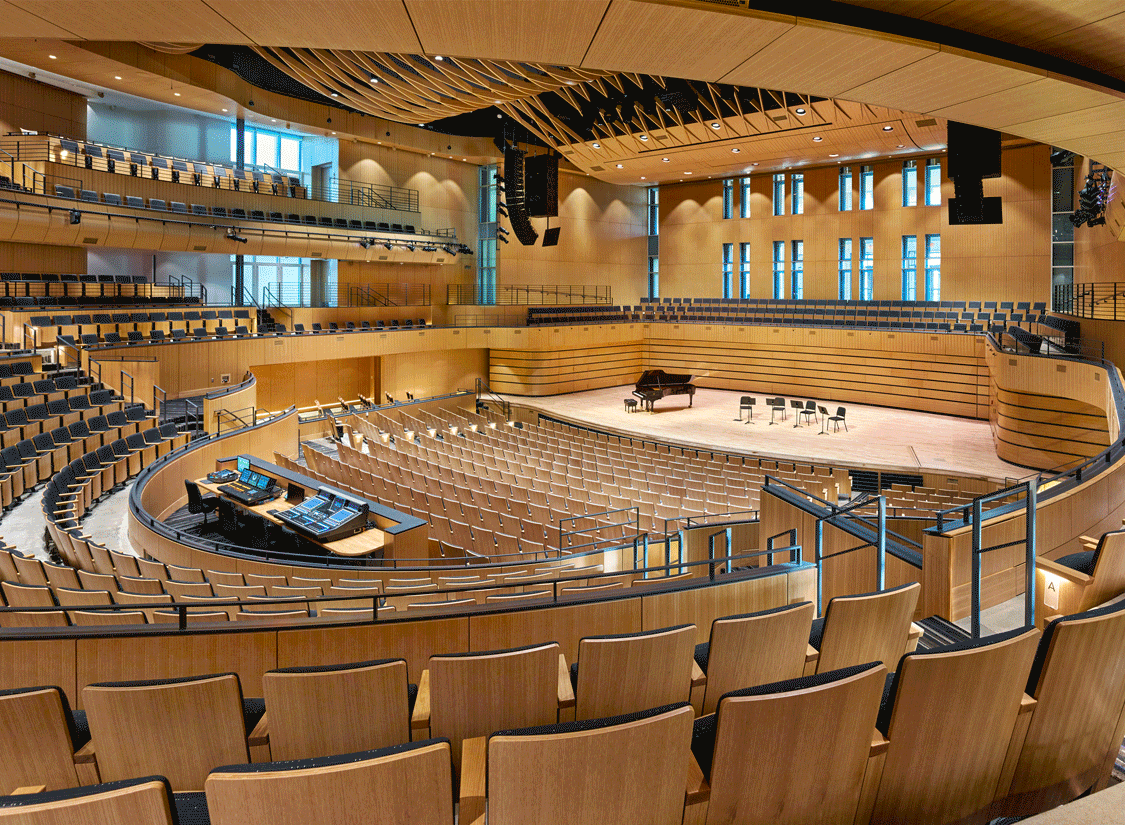The performing arts are increasingly relying on advances in digital acoustic architecture to support different performance needs within one transformative venue.
Such is the case at Liberty University, where the new 1,600-seat Concert Hall is able to accommodate a wide variety of musical presentations – ranging from intimate natural acoustic concerts to large amplified events. The client’s desire to showcase the broad range of ways music resides within the campus setting sparked the design of what is considered the first purpose-built multi-modal concert hall in the U.S. This “phygital” space, which can be physically and digitally altered to support any type of performance, can be transformed from a wood-lined room designed for acoustic events to a less reverberant space that embraces amplification and the ever-expanding possibilities of digital music-making.
At the heart of the Hall’s flexible design is a revolutionary approach to acoustics. The baseline state of the room is a Hickory-clad chamber that supports natural acoustical performances. By deploying acoustic banners and drapes, the hall can physically mask its hard surfaces and transform into a space for amplified music. A layer of digital architecture supports the alteration of acoustic parameters with the assistance of hundreds of small mics and speakers. What is gained by all three acoustic moves, and what makes this venue unique, is the comprehensive, push-button control over both the natural and electronically amplified dynamics of the space.

